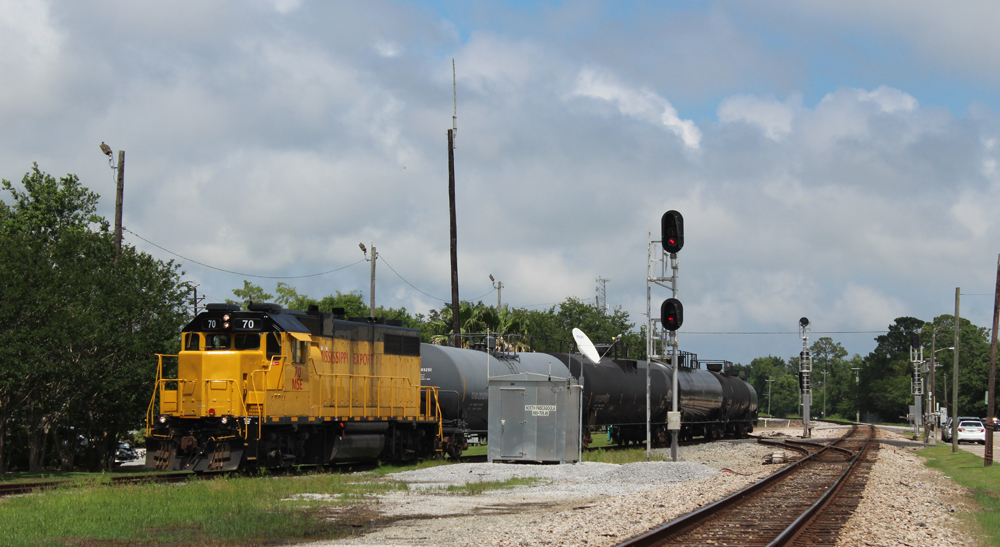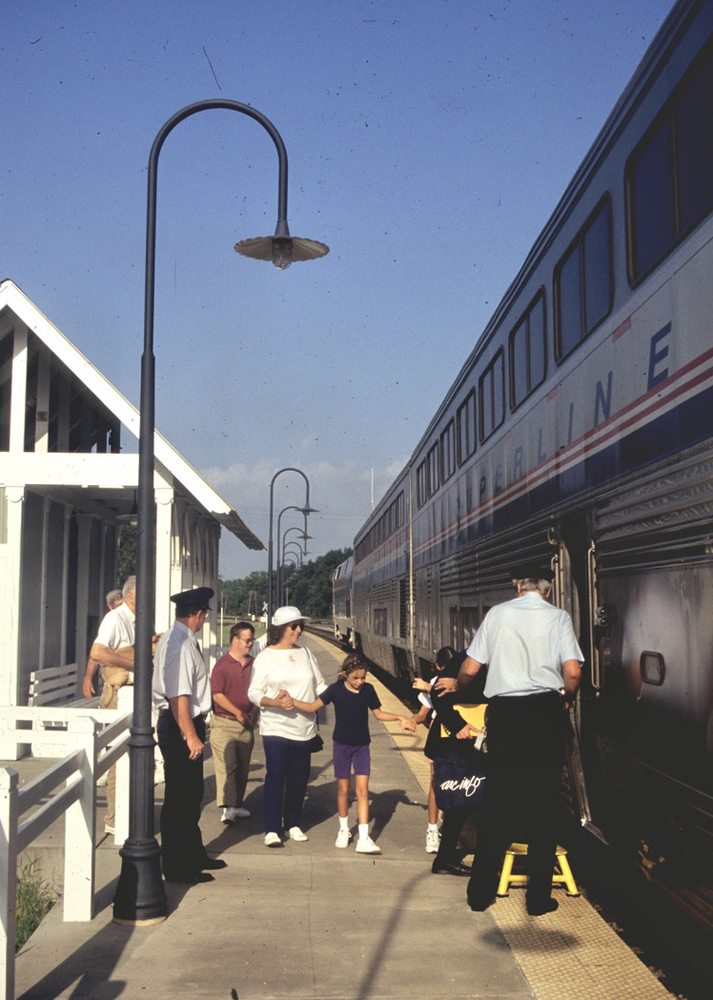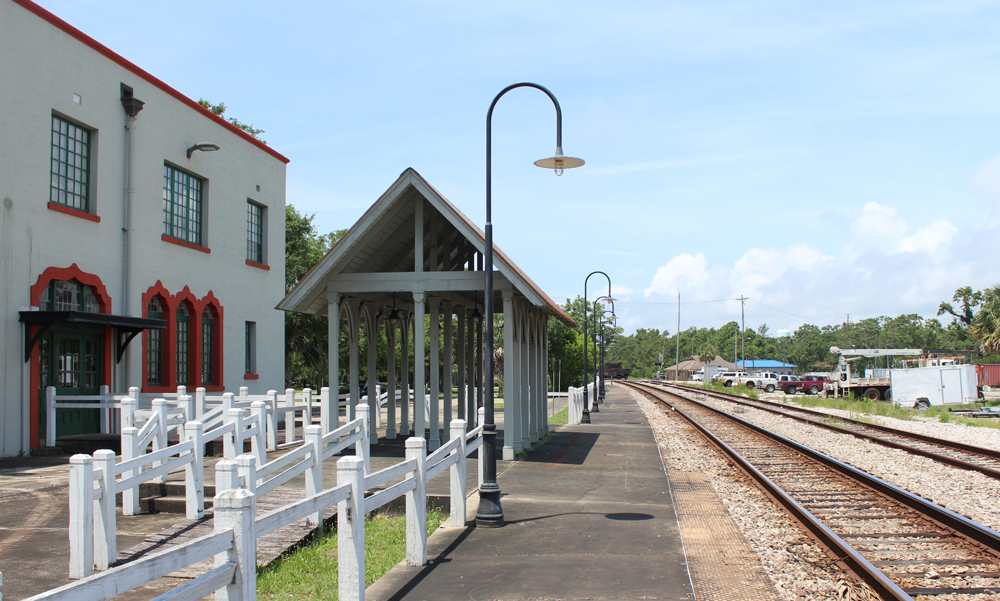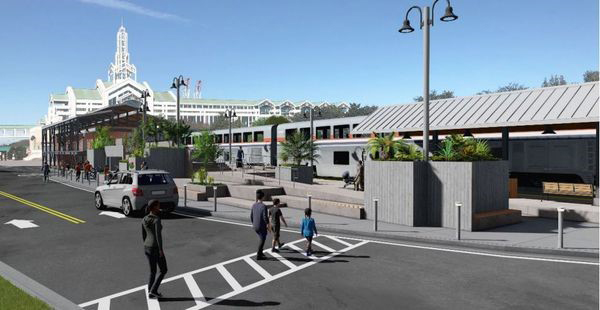
WASHINGTON — The words “significant harm” and “unfair” on dozens of comments are countered by “boost tourism” and “economic growth” on dozens more. But comments filed with the Surface Transportation Board as it prepares for its hearing on Amtrak’s effort to start Gulf Coast service finds the phrase “precedent-setting impact” showing up on both sides of the dispute.
Trains News Wire examined more than 125 comments and requests to deliver oral testimony for the STB’s proceeding considering Amtrak’s intention to add two passenger round trips between New Orleans and Mobile, Ala., on 144 miles of track owned by CSX and Norfolk Southern.
Sixty-six responders, led by U.S. Sen. Roger Wicker (R-Miss.) and Federal Railroad Administration Administrator Amit Bose, are set to offer their thoughts to the STB and representatives from the two host railroads, Amtrak, and the Alabama Port Authority beginning at 9:30 a.m. EST on Tuesday [see “STB releases list of public-comment speakers for Amtrak hearing,” Trains News Wire, Feb. 11, 2022].
This is the first phase of a two-part hearing; the parties to the dispute will present their cases in March. It promises to be an all-day event held via Zoom that will be streamed live on the STB’s YouTube channel. But comments filed since Feb. 1 provide an interesting preview of the positions oral presenters will take.
Concerns about freight service
CSX and NS enlisted support of state railroad associations, freight customers as far away as rural Quebec, and a handful of politicians in a flurry of last-minute filings. As anticipated, their positions mirror talking points CSX CEO Jim Foote raised in a mass email to customers [see “CSX seeks shipper support …,” News Wire, Feb. 4, 2022].
These comments generally use similar language expressing fears that introducing passenger service along the Gulf Coast “will cause significant harm to freight service, potentially across the entire U.S. rail network.” The submissions assert Amtrak ignores “submitted evidence” in the form of a host railroad-sponsored RTC capacity modeling; the Federal Railroad Administration has questioned that study [see “DOT-FRA filing in Gulf Coast case offers detailed criticism …,” News Wire, Dec. 15, 2021].
Jon Cool, president of the Michigan Railroads Association, says, “If Amtrak is permitted to commence — or increase — passenger service without paying for and completing required infrastructure, safety, and capacity enhancements, the cost of that service will inevitably fall on the shoulders of freight railroads and Michigan shippers.” Significantly, the Mississippi Railroad Association was not among the 14 such groups or short lines weighing in.
The support of CSX’s contentions by more than 30 shippers and connecting regional lines, wherever they may be located, is understandable because of their ongoing business relationships with the freight carrier.
“We have a strong partnership with CSX, so anytime something like this comes up it concerns us; if we feel strongly enough, we’ll weigh in,” John Rickoff, President and CEO of Michigan’s Lake State Railway tells News Wire in a telephone interview. While he only “glanced through” the STB filings, Rickoff characterizes service from CSX over the last two years as “awesome — we started a run-through power agreement between Toledo and Flint last summer seven days per week in each direction, and they rarely miss the interchange.”
A major question the STB must decide is whether the public should pay to improve CSX and NS’ “fluidity of service,” as Watco CEO Dan Smith puts it. If that’s the case, then it is proper for the STB to determine the extent to which CSX and NS (and Amtrak, for that matter) have an obligation to be transparent about their operations and finances.
A prospective precedent

In his submission, Smith is apprehensive about “the potential precedent-setting impact on our nation’s efficient freight rail network,” but what precedent means for Amtrak is the concern of passenger advocates, such as Rail Passenger Association President and CEO Jim Mathews. He points to “the importance of setting the proper precedent for introducing new or enhanced services, especially in view of historic new levels of taxpayer funding,” and wants the STB to consider “the very real benefits — economic and social — that will accrue to the communities, states, and U.S. as a whole, from the restoration of Gulf Coast service,” says Mathews.
Rail Users Network Chairman Richard Rudolph wonders, “If opposition is [CSX’s] policy in New Orleans, then will it be the policy in New England should CSX’s merger with Pan Am Railways be approved?” Both Mathews and Rudolph will be speaking Tuesday.

Pan Am president David A. Fink suggests there are similarities to inauguration in 2001 of Downeaster service over his railroad in which Amtrak, Northern New England Passenger Rail Authority, and Pan Am now view their relationship as a partnership, “wherein each party has a say in how the rail lines are utilized and what resources are needed to maximize the efficiency of both rail modes.” Fink adds, “Negotiation among equals, rather than litigation between adversaries, has proven to be a successful model to allow intercity passenger and freight rail service to coexist.” He characterizes Amtrak as the “recalcitrant” party.
What troubles many economic development officials from cities along the route, as well more than a dozen passenger rail advocates around the country who are actively attempting to launch corridors in their regions, is that CSX and NS have clearly chosen to take an adversarial, rather than collaborative. approach with the Gulf Coast Working Group, Amtrak, and the FRA.
Pascagoula, Miss., City Manager Michael Silverman points to “extensive planning already invested by Mississippi municipalities” and a service “providing an alternative mode of transportation for citizens and furthering interconnectedness amongst Mississippi communities.”
Seeking clarification

Many commenters want the STB to provide a roadmap that balances all interests. Although politicians from the Mobile area have aligned themselves with the Port rather than acknowledge potential benefits to downtown commerce and tourism, U.S. Rep. Al Lawson (D-Fla.) seeks a broader approach. His Jacksonville, Fla., district includes CSX headquarters and the railroad’s 3,000 employees in the area.
Lawson wants to “use standard industry practices, such as studies that model the needs of all users to optimize investments needed to reflect community needs, congestion mitigation, and environmental goals. I will remain committed to efforts to improve mobility options for all Americans which can improve people’s quality of life and addresses climate change.”
That may be outside the scope of what the STB has in mind in resolving this dispute. But at the very least, the regulator will be expected to establish “guidelines [that are] clear, facilitate factual analysis of operating impacts, and support development of a plan to address them …i n an appropriate timeframe,” as suggested in a comment from Genesee & Wyoming’s Alabama & Gulf Coast Railway.
Providing additional perspective during the public-comment portion of the hearing will be scheduled speakers including former Norfolk Southern and Amtrak CEO Wick Moorman; ex-Virginia Department of Rail and Public Transit director Thelma Drake; Ray Chambers, president of the Association for Innovative Passenger Rail Operations; and independent consultants Virgil Payne and Alan Drake.
With the hearings looming, skirmishes continue. Amtrak complained last week that Norfolk Southern won’t allow crew familiarization runs on its short stretch of track in New Orleans, even though the Crescent has been annulled south of Atlanta Monday through Thursday because of NS trackwork. Meanwhile, CSX and NS want the STB to ignore an Amtrak “surrebuttal” filed Feb. 1. It points out the railroads still refuse to reveal “correct, transparent, and agreed-upon inputs” to the RTC modeling that is the basis of their request for over $400 million in infrastructure improvements before any passenger trains can use the line.
The board clearly has a daunting task to sort everything out.














I think it’s time to revisit the Pan Am merger. This doesn’t look a good mix of CSX AND Commuter Rail and Amtrak in the Northeast. Somehow I see CSX holding Amtrak and Commuter Rail hostage in the future.
Passed through Mobile twice last Thursday. CSX’s ex L & N line runs next to I-10. Driving east bound about 11:15 AM, two eastbound monster CSX freights waiting to get into or through Yard when I passed. Going home (west) about 2:45 PM same two freights still sitting in same spots. Couldn’t be different because of the graffiti on some of the cars. NOW I KNOW why CSX doesn’t want Amtrak. Can’t move their own reduced traffic, much less someone else’s traffic.
Remember in 2006 after line restored after Hurricane Katrina, this line had 12 to 14 trains each way a day. After EHH came in it dropped to less than half that. Been like that ever since. Their Gentilly Yard in New Orleans (also seen from I-10) was almost always full prior to Hunter. Now it runs on a good day at 70% of what it used to.
With management like this they’ll be out of business in a few years.
Proposed schedule 3 hours 18 minutes comparable to the 1961 Hummingbird. Google drive times between New Orleans Amtrak station (NOPUT) and the probable Mobile station 2 hours 6 minutes. 2 sets of equipment each getting 264 miles a day. Does anyone else see something wrong with this? With a different schedule only one set would be needed.
I wonder: if the addition of Amtrak passenger trains on this line will have such a devastating impact on the National rail network, or set such a dangerous precedent, where are the comments opposing Amtrak from the other Class 1 Railroads, BNSF, UP, KCS, CN, CP??
Seems like the hyperbole from all sides far exceeds the number of trains evolved.
Mr. Rice: in negotiations, one must layout your contentions clearly beforehand. And if the local communities want this service, what are they willing to concede to sweeten the deal? Right now, they are offering nothing but demands for service. So I would suggest this: No new local property taxes on any capital improvements for say, 50 years. No one has brought up the property tax question: should host railroad pay taxes on improvements made to accommodate another carrier, for which the host is not compensated or ever hopes to be profitable in the venture? Businesses that can’t be profitable go out of business. Blessings
2 trains a day of 4 passenger cars each is going to disrupt the US rail shipping network?
Huh?
This is current school freight railroading that doesn’t like to be held accountable to schedules or to anyone else but themselves.
A 2109 rending of a proposed station in Mobile, Ala., at the former station site.
Wow! trains is clairvoyant!
I do not see passenger demand for this service. I see this as political money move.
If Joe ever wakes up and if Mayor Pete gets off his social justice crusade for long enough to read the newspaper, they might realize this: Amtrak’s business model isn’t working. Neither does the freight railroad’s business plan work.The freight railroads can’t run their own freight trains so they aren’t going to run Amtrak trains either.
Caught in the middle are the shippers, coerced by the freight railroads to take the side of the same corporations that have been screwing them over for the past decade.
Amtrak is the canary in the coal mine. Time to take a second look at a railroad that can’t accommodate a six-car Amtrak train. How is it going to run a three-mile long freight?
As for the shippers, take a look out the window. That three mile long freight the railroad is so proud of won’t move your carload.